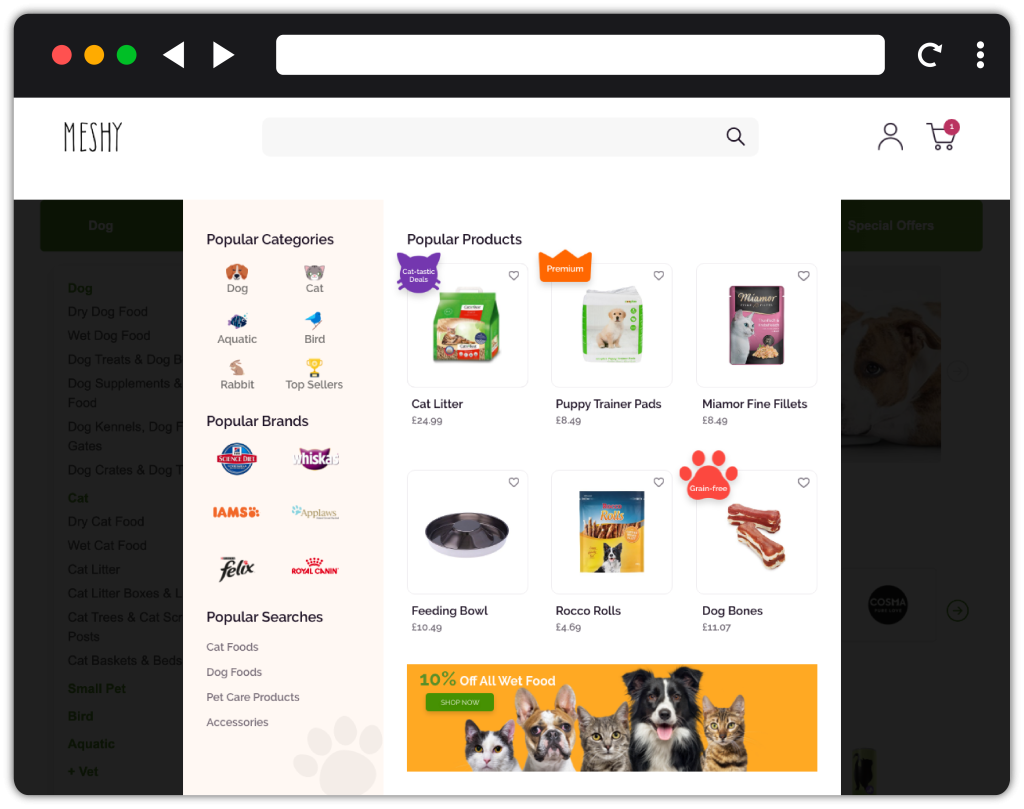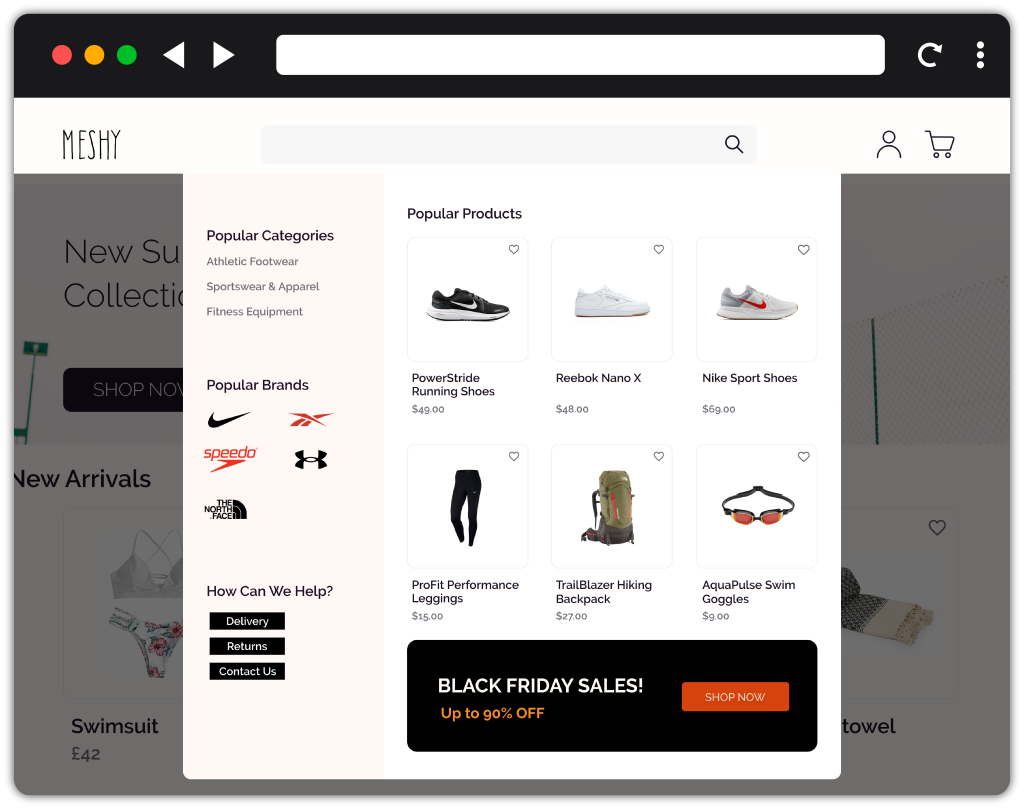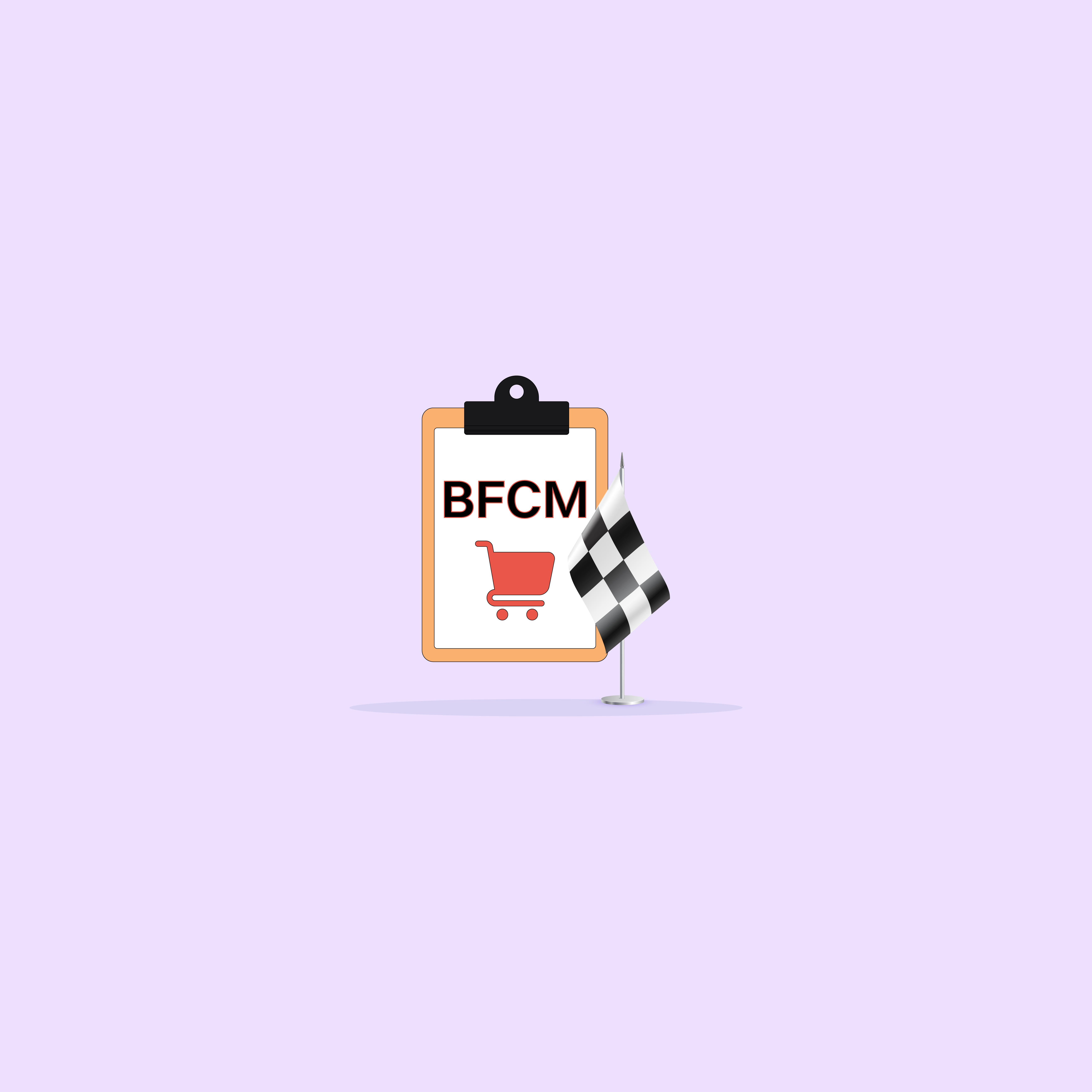Our websites use cookies. By continuing, we assume your permission to deploy cookies as detailed in our Privacy Policy.
Discover the Hidden Opportunities in Your Internal Search Engine!
A customer who searches for something on your website already intends to buy something. But don’t let that mislead you, and don’t stop doing better. There are still ways to create a better experience for your customers and lead them to the right products, all the while increasing your average order value and conversion rate.
Key Takeaways
- A good on-site site search means better customer experiences and higher conversion rates.
- When a searched product is out of stock, recommend alternative products and turn this into a sales opportunity.
- Use badges for products according to their most distinguishing features and draw visitors’ attention to the right products.
What are the Benefits of Optimising Your eCommerce On-Site Search?
According to research by Coveo, 68% of customers leave an eCommerce site because of a bad on-site search experience and not being able to find what they’re looking for. Therefore, providing a good customer experience is almost impossible without on-site search optimisation. And if a customer doesn’t have a good shopping experience, customer satisfaction is out of the question.
Optimising your on-site site search will create a more effortless shopping experience for your customers with relevant and personalised search results and bring you higher conversion rates. It will also provide a better understanding of your customers’ needs and behaviour sets, and improve your search with analytics data.
How to Optimise Your eCommerce On-Site Search in 9 Steps
1. Make Your Products Stand Out with Product Badges
Though many of them may look similar, each product on your search page is different from the rest. Use badges for products according to their most distinguishing features.
Supercharge your listings! Grab your FREE Product Badges Guide and unlock the power of badges today!
For example, say a customer has made a number of vegan product purchases and is now looking for a cosmetic product, a leather jacket, etc. Clearly, they won’t be looking for genuine leather. You can use “cruelty-free” badges to draw their attention to the right products.

2. Show That Your Website is Alive with New Arrivals
People love purchasing the newest products and following the most recent trends.
And new products come and go like seasons. Let your customers know about New Arrivals for the product categories they’re interested in. That way, you can directly lead those trendy ones to the products they might be interested in the most.
3. Turn Out-of-Stock into a Sales Opportunity with Smart Offers
When a searched product is out of stock, it doesn’t have to be the end of the customer visit. As disappointing as it is, there are ways to leverage this situation.
Keep them from searching for what they’re looking for on another site. Instead, turn this into an opportunity to make other relatable recommendations to increase the sales possibility. Benefit from their past purchases to make pinpoint product recommendations.
4. Autocomplete Your Customers’ Words
When your customers start typing “F…”, immediately show them ‘Spring Flowers Easy Care’. You can make it easier for them by auto-completing their queries. Show relevant searches in a dropdown menu, so they can easily find what they are looking for. Again, you can benefit from their past purchases to make search suggestions.
5. Enable Search Suggestions and Autocorrect Misspellings

Did you know that “Hundai” is currently the most misspelt brand name? Or was it Hyundai?
Around 25% of search queries made on eCommerce sites are misspelt. Imagine missing that many sales opportunities because you didn’t have the right tool to autocorrect those misspellings.
To avoid empty search result pages, implement a tool that will do that and also offer alternative query options.
6. Use Search Page Data for First-Time Visitors

When you don’t have sufficient data on a visitor, use the best thing you have at hand to generate the best recommendations.
Use search page data for a “Most Searched For” campaign to start your relationship with first-time visitors. Directing them to popular products you already know are in demand will help them start their journey off on the right foot.
7. Use Keyword-Rich Titles and Product Descriptions
The more keywords a product title or description contains, the more likely it will appear at the top. That way, it will stand out as the most relevant search result, and the customer will find exactly what they are looking for without losing time.
8. Take Advantage of Customer Reviews
The influence of social proof on sales is undeniable. Reviews on a product page make a huge difference when deciding to buy a product. However, don’t limit their usage to product pages. Display how many reviews and stars products have in the search box and on the result page as well.
9. Use Analytics to Track and Improve On-Site Search Performance
An insight into your actions’ outcomes must be part of your strategy. Because you need to acknowledge the results to measure the success of your roadmap correctly, so use analytics to see popular searches, no-result searches etc.








